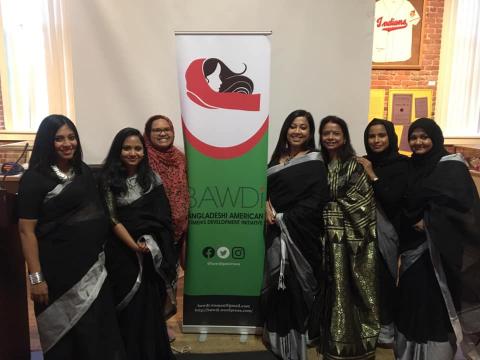
BAWDi Board members wearing traditional Black and White saris in recognition International Mother Language Day
International Mother Language Day: Sharing our Language, Culture and History
The Bangladeshi American Women’s Development Initiative (BAWDi), a community-based organization that supports and advocates for Bangladeshi American women, girls and families in New Jersey hosted their second annual event commemorating Mother Language Day. This year the event centered around a cultural art and textile exhibit and fashion show on Saturday, February 22nd in partnership with the Paterson Museum in Paterson, NJ. With over 100 people in attendance, it was the biggest turnout in the Museum’s exhibit history!
International Mother Language Day, February 21st, recognizes, celebrates and uplifts the incredible diversity of languages we have in our world. The day aims to promote awareness of linguistic and cultural diversity and to promote multilingualism and has been recognized by the United Nations since 2002. The day was established to recognize the 1952 Bengali Language Movement in Bangladesh and is of great significance to Bangladeshi communities throughout the world. This was a political movement in former East Bengal (currently Bangladesh) advocating the recognition of the Bengali language as an official language, in the face of great oppression and violence. February 21st was chosen as the date of recognition in honor of Bengali students and peaceful protesters Abdus Salam, Rafiq Uddin Ahmed, Abul Barkat, and Abdul Jabbar and others who sacrificed their lives on February 2, 1952, for the right to speak Bengali when they were shot and killed by the then West Pakistani Army, which was working to actively suppress the Bengali language and culture.
The resolution to establish this day came decades after this tragedy and was the idea of Rafiqul Islam, a person of Bangladeshi descent living in Vancouver, Canada, who wrote a letter to then UN Secretary-General Kofi Annan asking him to take a step for saving the world's languages from extinction by declaring an International Mother Language Day.
This is the second year this event was held at the museum. By focusing on textiles for this exhibit, there was a direct connection made between the history of Paterson as an industrial silk city-where early immigrants from Bangladesh came to work in the 20s and 30s-and the storied legacies of indigenous textile traditions in Bangladesh.
This year BAWDI again shared the background of International Mother Language Day, the language struggle of the nation of Bangladesh, while also grounding the day in the city of Paterson itself, uplifting and honoring Black History Month and paying homage to the indigenous communities whose land the museum inhabits. We also recognized public officials who came out to support the event, from Paterson Mayor Andrew Sayegh to local county and city officials.
At the exhibit opening, Giacomo DeStefano, the Paterson Museum Director, spoke to the history of silk manufacturing in the city, from the beginning of the history of silk in China to how silk production and distribution made Paterson Americans first true industrial city. The museum itself features historical silk weaving machinery from these factories year-round.
After this, Dr. Khyati Joshi, Professor of Education at Fairleigh Dickinson University spoke on South Asian American history and immigration, including immigration of early Bangladeshi immigrants to New Jersey. Her presentation delved into race and ethnic-based immigration bans from the Immigration Act of 1917, which banned the immigration of people from the Asia-Pacific zone, to the current Muslim bans enacted by the Trump administration. She touched on supreme court cases that upheld and codified racist policies that refused citizenship to nonwhites, demonstrating how the legacies of racist immigration policies and sentiments sadly, continue today.
The event then transitioned to the history of textile production from the region of current-day Bangladesh. Starting from ancient times to colonialism, to the onset of modern-day fast fashion production and labor struggles. When it comes to history, many people don’t know that the famed cloth, muslin, was invented in the area of present-day Bangladesh, and was greatly valued by ancient Greeks and Romans. The historical production of muslin can still be seen in saris and cloth produced today, such as in the work of the famous handwoven Jamdani saris, a type of modern muslin.
Textiles were the greatest economic production in the region until the British colonized the Indian subcontinent, forcing open the Bengali market to British goods while at the same time implementing protectionist policies such as bans and high tariffs that restricted Bengali imports.
These economic policies led to deindustrialization in the Bengal region, essentially almost completely shutting down indigenous textile manufacturing. Yet, textiles later became a tool of resistance, as part of the non-cooperative movement to end British rule led by Mahatma Gandhi. Supporters of Indian independence wove their own clothes from cotton, choosing to no longer purchase British cloth. The handwoven cloth was known as Khadi or khaddar as is still produced today.
The Textile industry was revived in Bangladesh in the 1980’s and has continued today. The textile and clothing industries currently provide the biggest source of growth in Bangladesh's rapidly developing economy. By 2001 the textile industry employed about 3 million workers of whom 90% were women and in 2004 the garment sector remained the largest employer of women in Bangladesh. The growth of this industry hasn’t come without major challenges and labor rights concerns. In 2013, Rana Plaza in Bangladesh became the site of the deadliest structural failure accident in modern human history and the deadliest garment factory disaster in history, with a death toll of 1,/134 people killed and approximately 2,500 injured. This preventable tragedy, along with other incidents that have killed thousands of workers led to protests and pressure on the Bangladesh government to do more to protect workers. The presentation also touched on the detrimental impact of fast fashion on the environment and on climate change. Despite these challenges, there have been positive developments. The indigenous handloom industry supplies 60–65% of the country's clothing demand, and the Bangladeshi ethnic fashion industry has flourished in the changing environment of the fashion world both within the country and abroad.
This information was followed by a fashion show of models wearing many of the fashions featured in the presentation. Community members wore Jamdani saris, Rajshahi silks, Khadi and other materials that gave the audience a living display of the legacies of Bangladeshi textiles.
The exhibit opening also featured a 10-minute bilingual presentation by BAWDi board member and Passaic County Count
Committeewoman, Mahbuba Neela and Census Ambassador and Board Member Minowara Begum on the importance of the Census 2020., The Bangladeshi community in Paterson, which some have estimated may be well over 15,000 people has been identified as an undercounted community, and BAWDi has been working in partnership with the city and county to ensure that this community is counted. Events such as this present an excellent opportunity for outreach and education.
The event closed with performances from the local members of the Bangladeshi community. Afterward, many in attendance explored the exhibit. It was poignant to see traditional Bangladeshi saris, cloth, and embroidery cherished by the community displayed in a museum that is accessible to the general public for everyone to see.
This is the first time a display like this has been up in the museum. As Dr. Khyati Y. Joshi, one of our speakers said: "If something like this existed when I was a little girl, it would have made a big difference".
If you are in the Paterson, NJ area, be sure to check out the Paterson Museum; the exhibit will be up till March 29th, 2020!

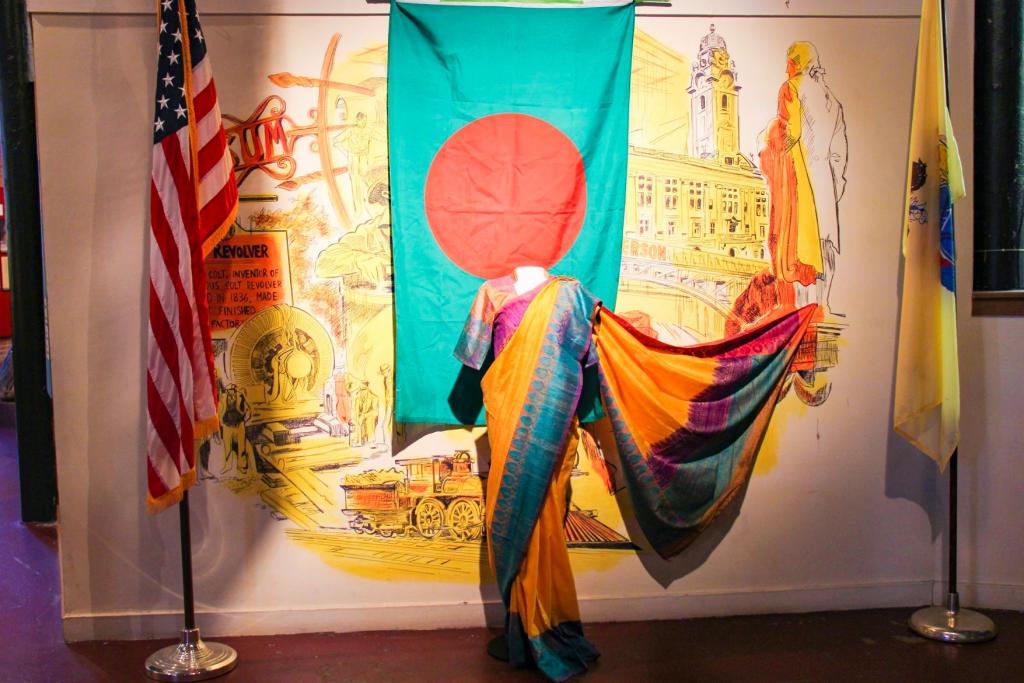
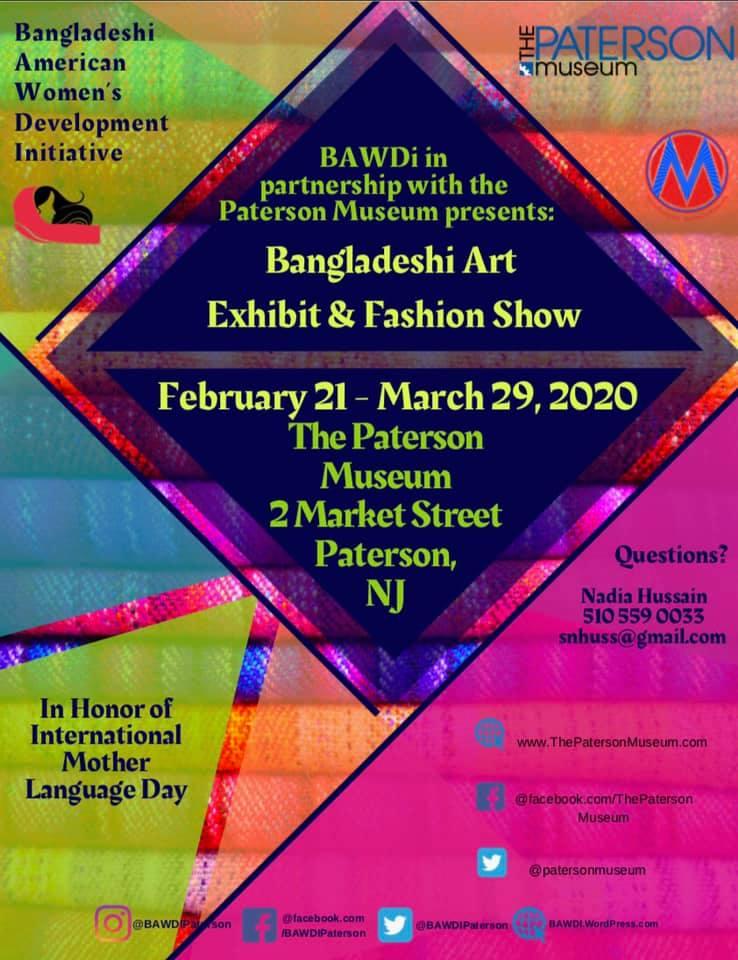
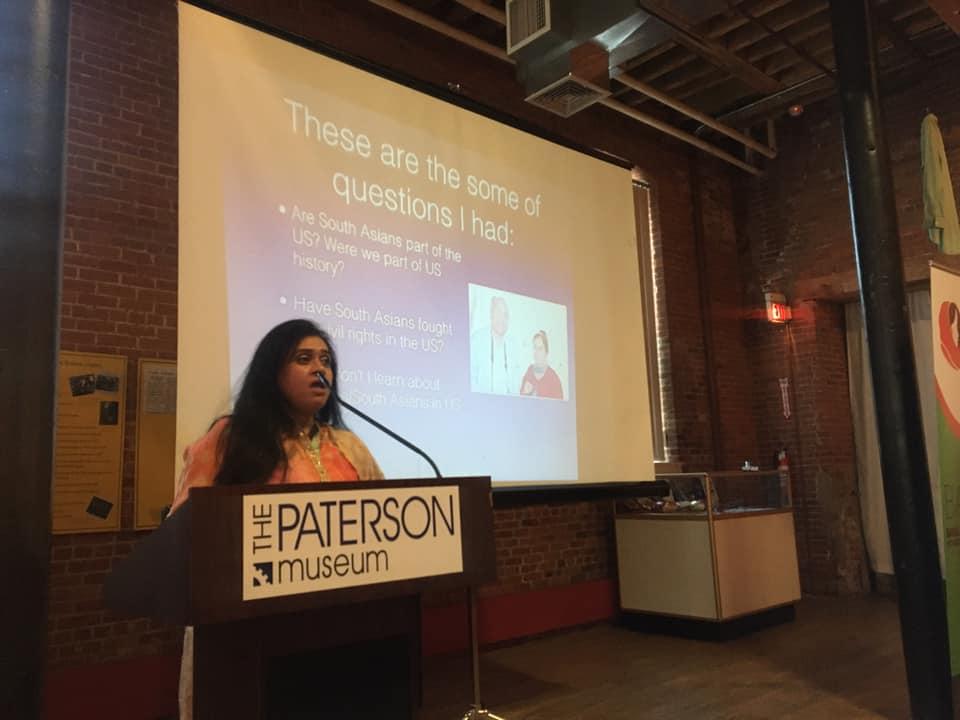
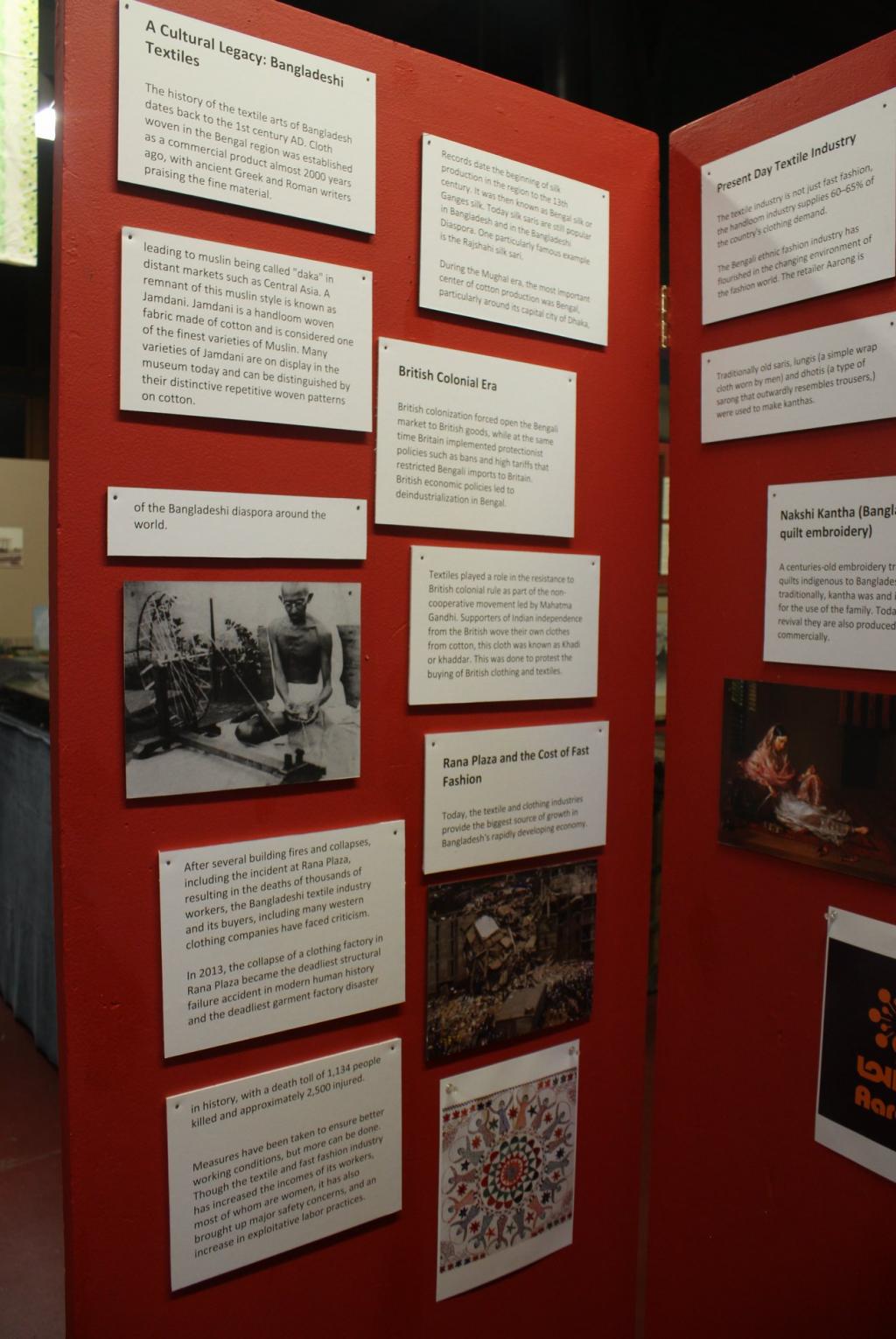
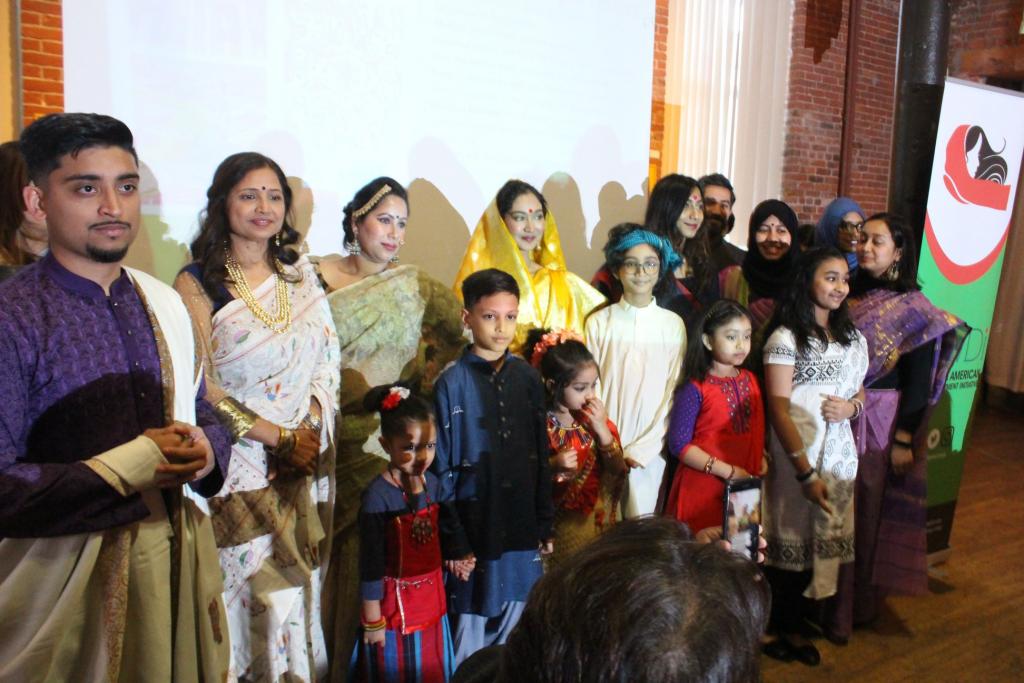
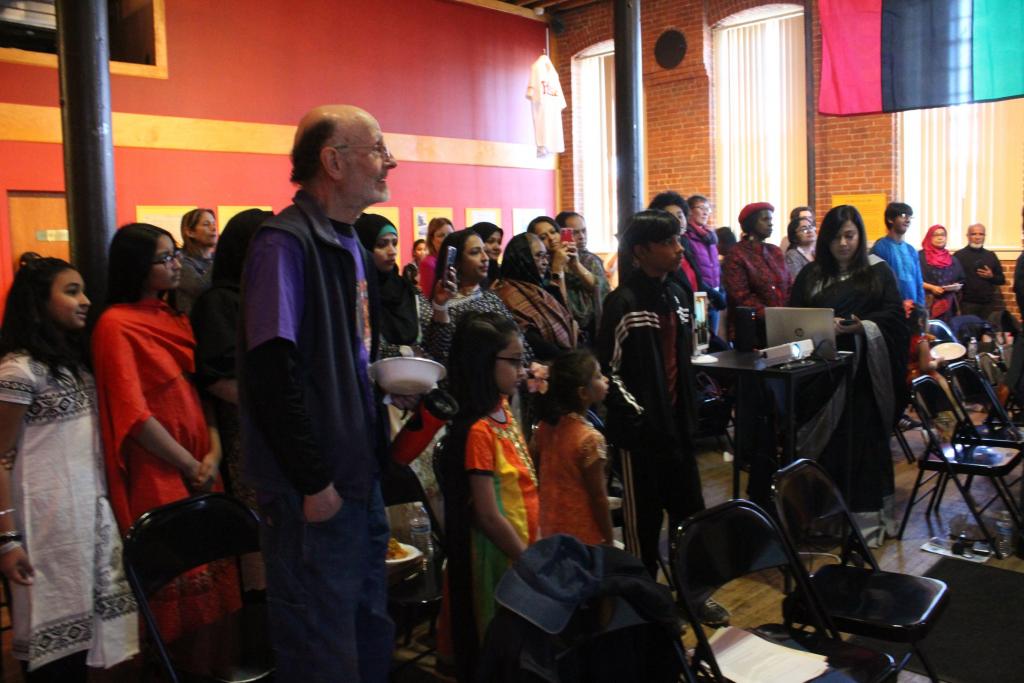
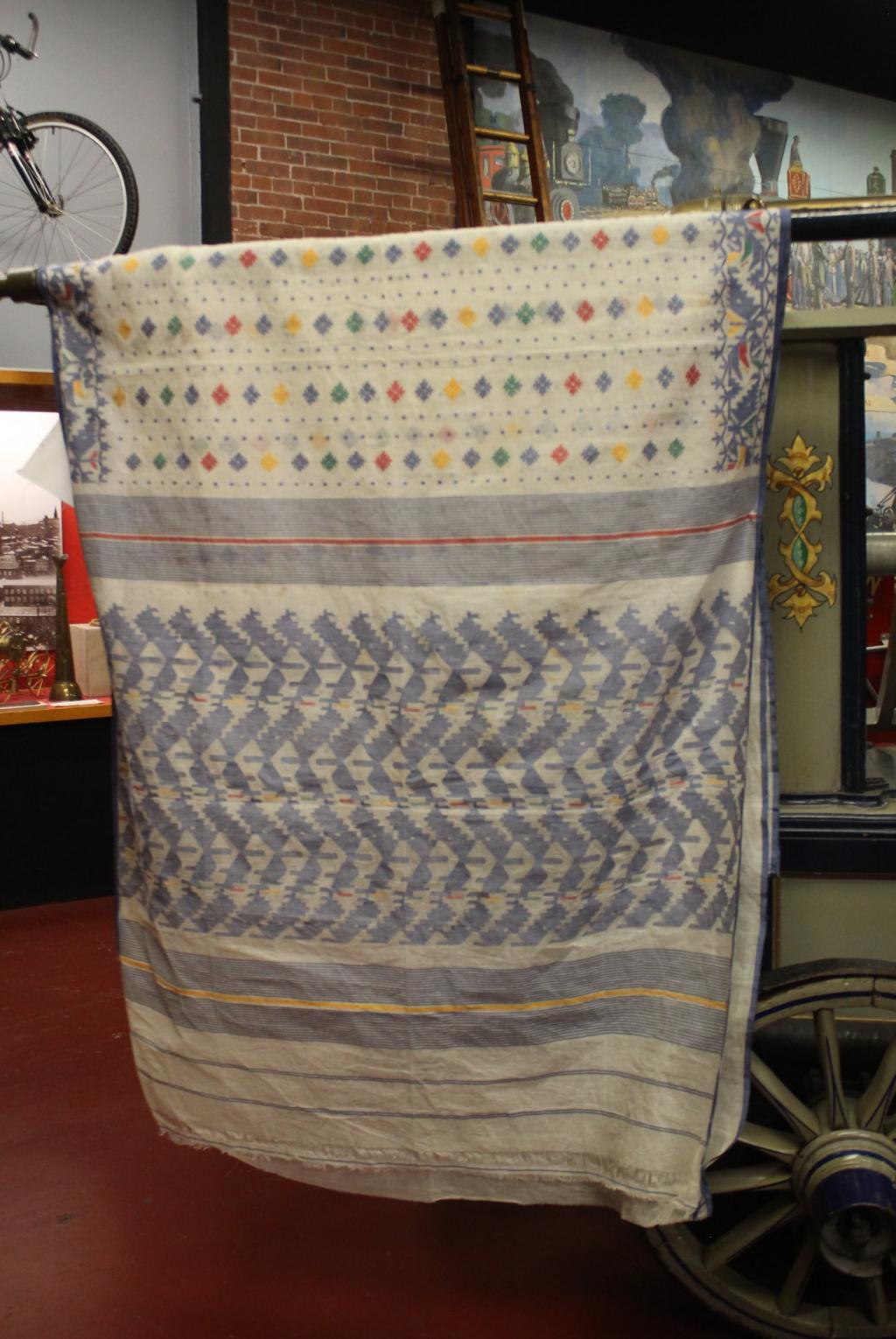
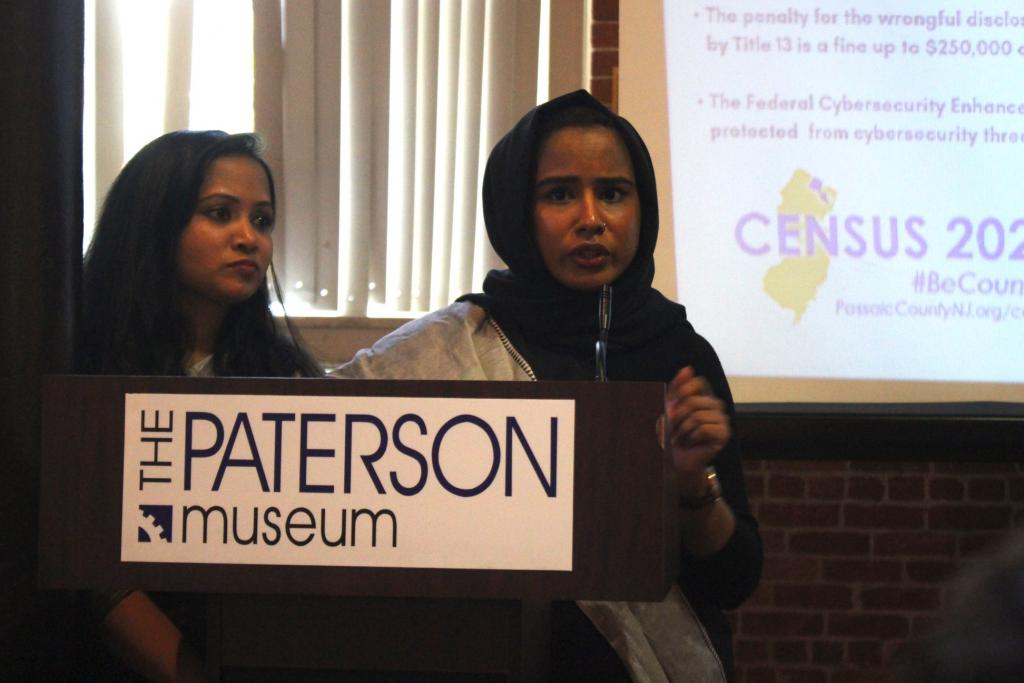
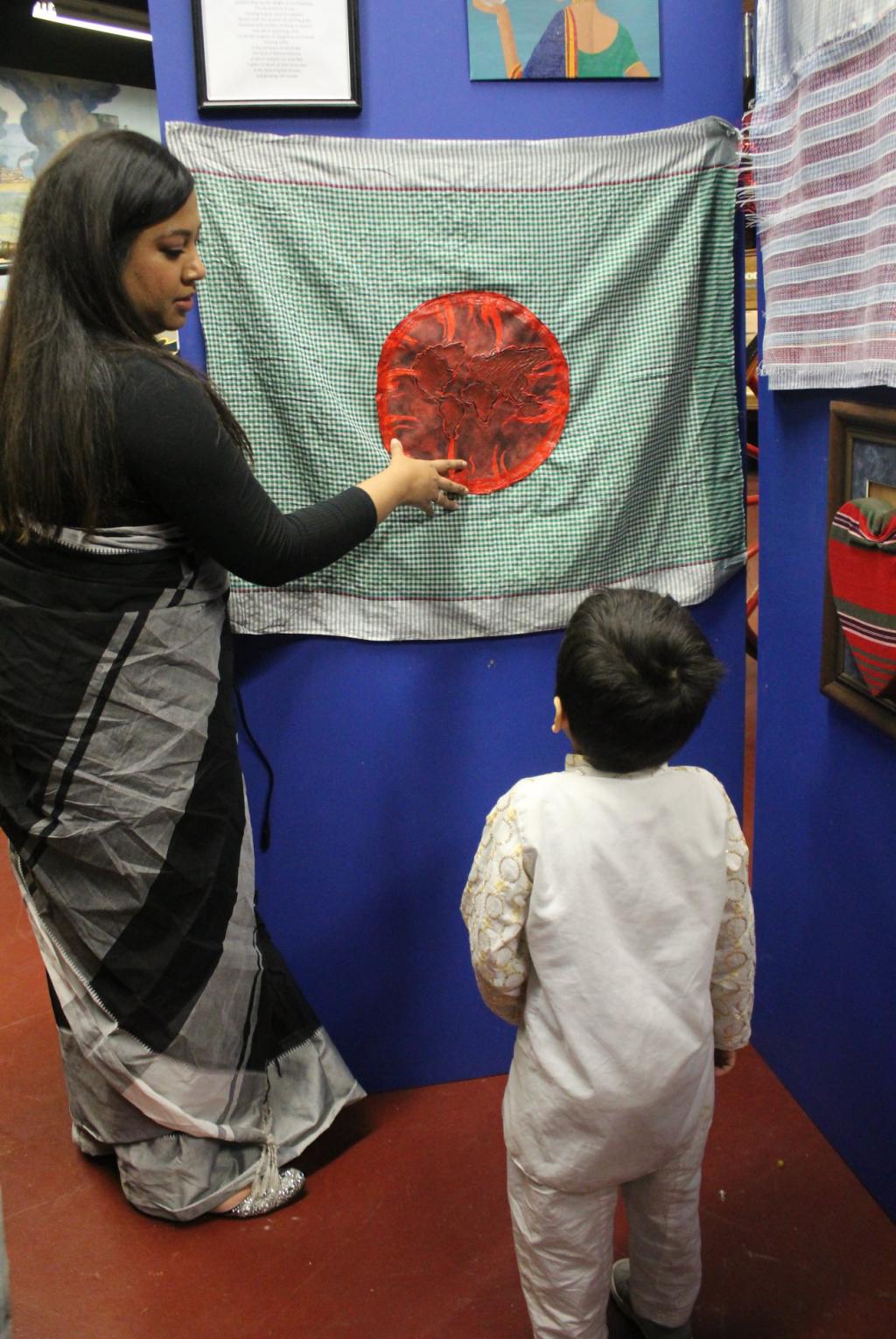


The views and opinions expressed in this post are those of the author(s) and do not necessarily reflect those of MomsRising.org.
MomsRising.org strongly encourages our readers to post comments in response to blog posts. We value diversity of opinions and perspectives. Our goals for this space are to be educational, thought-provoking, and respectful. So we actively moderate comments and we reserve the right to edit or remove comments that undermine these goals. Thanks!